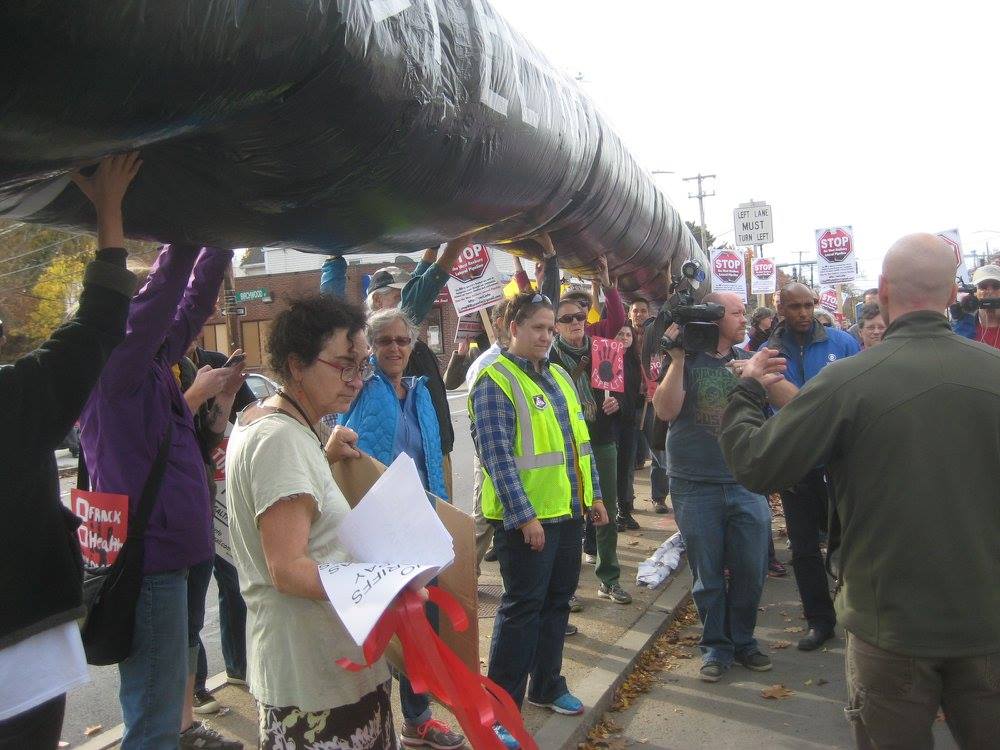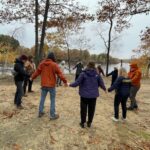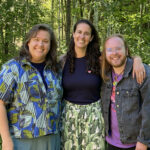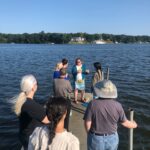This is the first in a series of posts to dig deeper in to the underlying principles of the Climate Disobedience Center. We invite you to join the conversation in the comments!
The Climate Disobedience Center is a strange organization in some ways. Marla, Ken, Tim and I have come together finding ourselves less driven by clarity about where we are going, but quite clear in our shared philosophy and principles that inform our worldview and underlay our approach to taking action. I think this is a natural place to be given the circumstances: humanity hasn’t faced a problem like this before, and we don’t know exactly what magic sauce is going to ultimately build a powerful enough movement to make the changes we need, but we do have some grounded understanding of what the attributes of our work must be in order to get there. Hence, we start from these principles as we experiment with new ways of action and movement building to make sure we’re on track.
I want to start this series off focusing on our third principle, which cuts to the core of who we are.
3. Engage individuals who see no alternative but to use our bodies in a final effort to avoid the abyss, who approach the task of re-centering society imbued with the hope, joy and serenity which only flow from living in the truth.
Who are our people? Who are we hoping to engage with the Climate Disobedience Center? People who have come to the moment of crisis in their own hearts. Many of us, when we honestly grapple with the reality of the climate situation end up confronting the abyss: in coming face to face with the science, suddenly see all the things that were important in our life in a new light – and undergo a radical re-alignment of priorities in our lives. Things that used to be important recede, as this existential crisis occupies more and more of our thoughts and attention.
My experience is that once we have had this crisis, we seek relentlessly the thing we can do that matters. Not only do other priorities in our life fade away in the face of the climate crisis, but that action that I thought was “how we do activism” couldn’t stack up to the urgency and magnitude of the crisis. And there comes a point at which the only logical thing to do seems to put our bodies in the way of the crisis.
The CDC serves to meet you at that place, and to help those called to transformative action move powerfully in the world.
This contrasts with what seems to be the typical environmentalist approach to engaging people. Often organizations, in an earnest effort to make action accessible, conceive of a ladder of engagement, believing that by starting off with easy asks, people will increase their commitment, and take greater action in the future. The hope is that by starting off changing lightbulbs (or some equivalent) that they will eventually be drawn into being powerful activists.
This in itself is not a bad thing, certainly there are thousands who want to engage in this way. The CDC’s intention is not to invalidate this approach, but to fill a void. For many who have deeply felt the crisis, this route seems trivial and inconsequential. This may not be a large group, but for our purposes that’s OK. I find resonance in Margaret Mead’s famous quotation:
“Never doubt that a small group of thoughtful, committed, citizens can change the world. Indeed, it is the only thing that ever has.”
By cultivating and focusing the work of the small but committed minority we can empower, embolden, inspire, and enlarge the broader movement. And for those who are ready to take bold action, who are ready to reprioritize their lives, who experience the climate reality as a monumental loss of faith in the world and the system we were born into, the insistence that there are easy solutions and that we don’t have to change much can be devastating and utterly disempowering. Which leads irrevocably to our 5th principle.
5. Tell the devastating truth that the world is ending on our watch. We refuse to dumb down the problem or lie about the scale and speed of global response necessary to avert cataclysm and survive increasingly chaotic conditions. In this we find true hope, not a false hope based on the denial of the hard reality or the allure of easy solutions.
To tell the truth is probably going to scare some people off. And we think that’s OK. To soft pedal the reality that we may already be over the cliff is dangerous because it scares off those who we know should form the backbone of the movement. But delving into finding hope in the hopeless will have to wait for another post.







Leave a Reply